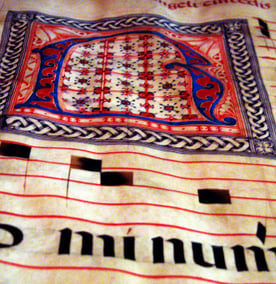 Daily Scripture Reflections for Tuesday
Daily Scripture Reflections for Tuesday
Scripture: Lectionary 486. Tue. Nov. 6. Philippians 2:5-11. Psalm 22:26-27.28-30.31-32: Luke 14:15-24:
There is a connection in the hymn to Christ found in Philippians and the Magnificat of Mary. Both are hymns (genre category); the Pauline citation of this liturgical hymn is entirely Christological but several words and thoughts complement the hymn of Mary which is (Mariological).
Paul did not write this hymn. It was already in use in the Christian community of believers. It fits perfectly with what he is telling us in the prologue to this hymn—we should put on the mind of Christ. This is mind-boggling for us for it means a total conversion of self into the likeness of Christ; it is a metanoia.
The hymn shows us the absolute humanness of Jesus and emphasizes his humility in a most profound way that humbles us! Though he was in the form of God he chooses to become flesh among us by being born in time. He is a servant of the Lord (doulos). He suffers death through his obedience to the plan of God for our salvation and finally is honored as Lord before whom every knee should bend and head bow.
Several words and thoughts within this hymn are also used by St. Luke in his composition of the hymn which Mary sang after her meeting with Elizabeth early in Mary’s pregnancy. Mary calls her self the handmaid of the Lord and thus the same word used for Jesus is used by her (doulos: servant, slave, handmaid). The disposition she has is to magnify God by telling us of her own lowliness and humility. Here , too, the same word is used as in the hymn in Philippians (tapeinosis=humble state, humility and truthfulness). Because of this she is called blessed among women and is praised for her belief that God has fulfilled his promises in her.
Paul hymn is quite early probably around 54-55 A.D. Mary’s Magnificat is Luke’s composition written in 85 A.D. The similarities of both hymns are in the theological background of Paul and Luke; both were also evangelical theologians and were inspired authors in what they wrote and what they handed on from their sources both oral and written. I personally like to use the common adage “like mother, like son” when comparing the two hymns who refer to Jesus and Mary. The Marian implication is seen in the “emptying out” and in the “being born” in the content of the first hymn. The two words which are not that frequent in the New Testament are the servant/slave (doulos for Jesus; doule for Mary) and the tapeinosis which is found in both hymns and mean to be in a state of lowliness among the poor of the Lord.
Thus the kenosis Christology of the Pauline citation of an early Christian hymn is complemented in the Magnficiat by the first three lines of that song of Mary. She emptied herself out to God so that she could be filled with the “Word” of God by the overshadowing of God’s Spirit. Amen.
Copyright 2012 Fr. Bertrand Buby, S.M.
About the Author

Guest
We welcome guest contributors who graciously volunteer their writing for our readers. Please support our guest writers by visiting their sites, purchasing their work, and leaving comments to thank them for sharing their gifts here on CatholicMom.com. To inquire about serving as a guest contributor, contact editor@CatholicMom.com.


.png?width=1806&height=731&name=CatholicMom_hcfm_logo1_pos_871c_2728c%20(002).png)
Comments